English | Inglés
Greetings, Hive!
It was 2008 and the seventh generation of consoles was at its peak, everyone wanted to see the sixth generation’s most iconic franchises adapted to the technologies of the moment, and of course, Devil May Cry was no exception. However, Capcom was faced with the tremendous challenge of making a game that would, at the very least; live up to the unprecedented success that was Devil May Cry 3: Dante's Awakening, which was undoubtedly the best title in the entire saga so far as well as one of the most iconic of its generation. The thing is, could Devil May Cry 4 live up to its predecessor? The answer may be a little more complicated than a simple "yes" or "no".
So without any further ado, let's start!
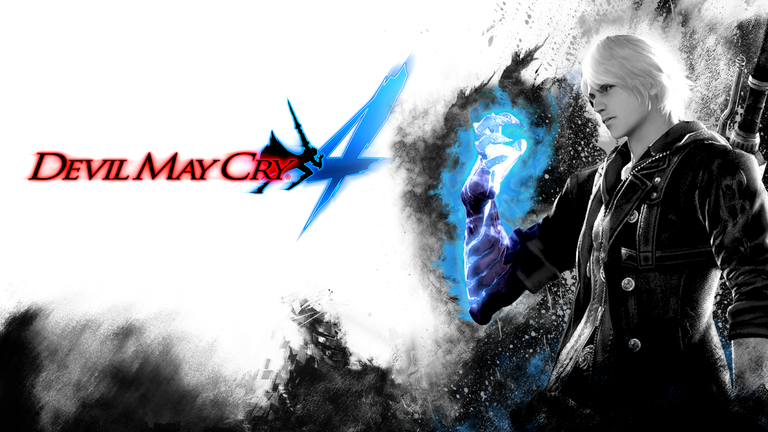
Devil May Cry 4 was released in early 2005 for the PlayStation 3 and Xbox 360, on January 31 in Japan, February 5 in the United States and February 8 in Europe, like the previous installments it was developed by Capcom and was the first game in the series to be released simultaneously on multiple consoles. The plot will put us in the shoes of Nero, a young demon hunter who hides a strange power in his right arm. The title begins with Nero making his way through a horde of demons in order to make it in time for the recital that Kyrie - our protagonist's romantic interest - is having in some sort of church belonging to a cult known as the Order of the Sword. Before I continue I want to point out that this scene is wonderful, there is no dialogue and it's only accompanied by Kyrie's voice singing, it's quite emotional and it works more than well to introduce these two characters.
Once in the church, Kyrie's recital ends and Nero sits next to her to watch the mass that is being dictated by the leader of the cult, an old man named Sanctus (who doesn't look like a bad guy at all), but suddenly the liturgy is interrupted by the attack of none other than Dante, who kills not only several soldiers of the Order but also their leader Sanctus. After this Nero confronts Dante with the intention of protecting the cult and Kyrie, but he is overpowered by Dante without much difficulty and then Nero decides to leave in search of Dante to get an answer about the murders he committed and also to take revenge.
Logically the first thing to catch our attention is the change of protagonist, changing a character as beloved as Dante for someone completely new seemed almost crazy, but I think that's the least of this game's problems, I mean, Nero doesn't strike me as a bad character or anything, after all Devil May Cry isn't the Iliad and it doesn't have to be full of deep and complex characters. Nero's personality (and physical appearance) is very similar to Dante's, he's also a guy who is overconfident in himself and his abilities and is constantly bragging about it. What manages to make them feel like distinct characters is the way the plot unfolds, Nero's development arc feels more like a teenage romance as his main goal is to protect/save Kyrie and it's something the plot places quite a bit of emphasis on.
From the second half of the game we move on to control our favorite demon hunter, Dante, and unlike Nero the motivations of this one have much less personal connotations, Dante's goal is simply to save the day and fix the mess that is happening in the world. It's true that no one plays Devil May Cry for its story, and although I don't mind, I feel that this game’s plot is pretty average to mediocre, it reminds me of the simplicity of the first game but I can understand that one because it was an experimental game. However as I said, this is something that doesn't bother me, I didn't come to play Devil May Cry looking for an existentialist reflection.
As you can imagine, Devil May Cry 4's strong point is its gameplay, and believe me, it doesn't disappoint. Let's start with Nero: Nero's arsenal is much more limited than Dante's and in fact, we will only have a sword and a revolver during the entire game; the Red Queen and the Blue Rose, respectively, and although at first glance this may seem a negative thing, to our pleasant surprise Nero's moveset is varied enough to not get bored of only having a sword and a revolver. The most distinctive thing about Nero is the Devil Bringer, the demonic power he has in his right arm, the main purpose of this is to execute powerful grappling moves against our enemies, we can also attract enemies towards us or direct us to their position depending on the enemy we face and their power level.
For example, against lower level demons we will always perform a grab if they are at close range or draw them towards us if they are at long range, whereas; with more powerful demons it's not that simple, before we can perform a grab attack at close range we will first have to weaken them enough. Now, let's talk about the game’s real star: Dante. Controlling Dante in this installment feels the same or even better than in the prequel, the movement, the fluidity, the precision, everything still feels exquisite in terms of execution, the style system makes its appearance again here and unlike the previous installment, we can change styles in real time whenever we want without interrupting a mission or finding a golden statue, the only thing we will need to do is press a button. Weapons though fewer in quantity, can also be changed voluntarily in real time. Adding these two factors plus Dante's already large repertoire of moves ABSURDLY expands the combo’s possibilities we have at our disposal, honestly I never had the ability to exploit this properly, but on YouTube there are those who have done it and for real, it's crazy. Seen in macro, we could say that Nero is a kind of "beginner" mode while Dante is an "advanced" mode.
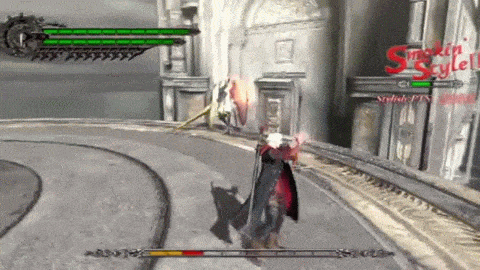
The enemies’ variety is quite wide to tell the truth, I think even more than in previous installments, the designs of the vast majority of demons is great, definitely my favorites were the Bianco Angelo and Alto Angelo. The bosses are no slouch either and perhaps my only complaint with them is that there aren't as many, what is a fact is that the final boss is a major disappointment. Difficulty wise I think it's easier than Devil May Cry 3, but that doesn't make it a ride in the park, there's more than one confrontation that will require us to pay more attention than usual. I also get the feeling that the mission scoring system is a little less demanding, but this may just be me.
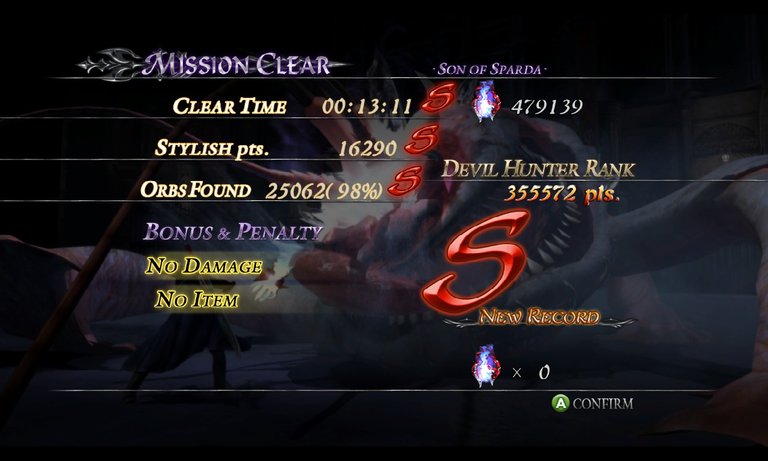
Regarding the game’s technical aspects the truth is that I don’t have something negative to say, first of all you have to consider that it is a 2008 game and above the first games developed for the seventh generation of consoles. It's a game that still looks very good despite not having excessively detailed textures, the fluidity of the animations in the cinematics is still spectacular, the design of scenarios sometimes moves away a bit from the gothic style of previous installments and opts for a more "realistic" style but honestly doesn’t feel any bad at all. Like its predecessor, the music usually accompanies us with heavy rock themes that are in line with the game’s rebellion spirit, but in the climatic moments shine imposing orchestral compositions that fit perfectly with the events.
Now, if everything I've said so far about the game is mostly positive, why is it so criticized? Simple: backtracking. Remember I said that from the second half of the game onwards we control Dante? Well yes, but we don't go through any new stages, in fact, we literally go back through everything we did previously with Nero, and that includes: enemies, puzzles, and even boss fights. I don't know why this decision was made, but logically it feels like a mediocre way to reduce production time and costs, and if we add to this the problems the game has with its story, a pretty lame final boss, too big expectations to meet, and a practically forced participation of Dante in the plot, we get a perfect formula for disaster. After the first walkthrough the game feels overly repetitive and takes away one of the most valuable aspects of this genre: replayability. It's a shame, to be honest Devil May Cry 4 isn't a bad game, in fact, I enjoyed it a lot the first time I played it, but looking at it again after all this time I can understand why it disappointed so many people. Devil May Cry 4 makes big mistakes but I don't consider that these are enough to classify it as a bad game, it's possible that these mistakes came from the expectations that it carried on its shoulders, expectations that unfortunately ended up playing against it, I've read a lot of destructive comments towards this game that I honestly don't understand, I mean, it can't be denied that it's not the best in the saga, but it also has enough virtues to shine by itself and I think any Devil May Cry fan should allow himself to play this installment.
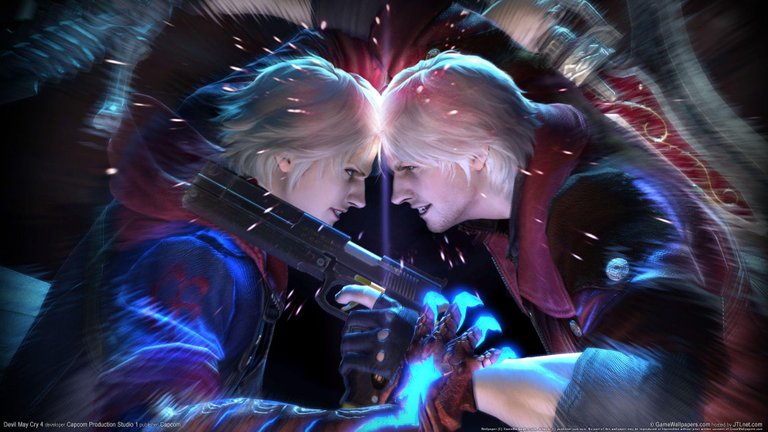
Español | Spanish
¡Saludos, Hive!
Corría el año 2008 y la séptima generación de consolas estaba en su auge, todos querían ver a las franquicias más icónicas de la sexta generación ser adaptadas a las tecnologías del momento, y por supuesto, Devil May Cry no era la excepción. Sin embargo Capcom se enfrentaba al enorme desafío de hacer un juego que, como mínimo, estuviese a la altura del éxito sin precedentes que fue Devil May Cry 3: Dante’s Awakening, el que sin dudas era el mejor título de toda la saga así como también uno de los más icónicos de su generación. La pregunta es, ¿pudo Devil May Cry 4 estar a la altura de su predecesor? La respuesta puede ser un poco más complicada que un simple “si” o “no”.
Así que sin más preámbulos, ¡comencemos!

Devil May Cry 4 fue lanzado al mercado a principios del año 2005 para las consolas PlayStation 3 y Xbox 360, el 31 de enero en Japón, el 5 de febrero en Estados Unidos y el 8 de febrero en Europa, al igual que las entregas anteriores fue desarrollado por Capcom y fue el primer juego de la serie en tener salida simultánea en varias consolas. El argumento nos pondrá en los zapatos de Nero, un joven cazador de demonios que oculta un extraño poder en su brazo derecho. El titulo comienza con Nero abriéndose paso entre una horda de demonios para poder llegar a tiempo para el recital que está teniendo Kyrie – el interés romántico de nuestro protagonista – en una especie de iglesia perteneciente a un culto conocido como la Orden de la Espada. Antes de continuar quiero destacar que esta escena es maravillosa, no hay diálogos y solo está acompañada por la voz de Kyrie cantando, pero resulta bastante emotiva y funciona más que bien para presentar a estos dos personajes.
Una vez en la iglesia, termina el recital de Kyrie y Nero se sienta junto a ella a presenciar la misa que está siendo dictada por el líder del culto, un anciano llamado Sanctus (y que para nada tiene cara de ser un tipo malo), pero de repente la liturgia es interrumpida por el ataque de nada más y nada menos que Dante, quién mata no solo a varios soldados de la Orden sino también a su líder Sanctus. Después de esto Nero se enfrenta a Dante con la intención de proteger al culto y a Kyrie, pero este es superado por Dante sin mucha dificultad y entonces Nero decide partir en búsqueda de Dante para obtener respuesta acerca de los asesinatos que cometió y además, tomar venganza.
Lógicamente lo primero en llamar nuestra atención es el cambio de protagonista, cambiar un personaje tan querido como Dante por alguien completamente nuevo parecía casi una locura, pero creo que ese es el menor de los problemas de este juego, es decir, Nero no me parece un mal personaje ni nada por el estilo, después de todo Devil May Cry no es la Ilíada y no tiene por qué estar repleto de personajes profundos y complejos. La personalidad (y la apariencia física) de Nero es muy parecida a la de Dante, él también es un tipo que confía en exceso en sí mismo y en sus capacidades y está constantemente alardeando al respecto. Lo que logra hacer que se sientan como personajes distintos es la manera en la que se desenvuelve la trama, el arco de desarrollo de Nero se siente más como un romance adolescente ya que su objetivo principal es proteger/salvar a Kyrie y es algo en lo que la trama hace bastante énfasis.
A partir de la segunda mitad del juego pasaremos a controlar a nuestro cazador de demonios favorito, Dante, y a diferencia de Nero las motivaciones de este tienen connotaciones mucho menos personales, el objetivo de Dante es simplemente salvar el día y arreglar el desastre que está ocurriendo en el mundo. Es verdad que nadie juega Devil May Cry por su historia, y aunque no me molesta, siento que el argumento de esta entrega es bastante promedio llegando a mediocre, me recuerda a la simpleza de la primera entrega pero a aquella la puedo entender por el hecho de ser un juego prácticamente experimental. Sin embargo como ya dije, esto es algo que no me molesta, no vine a jugar Devil May Cry buscando una reflexión existencialista.
Como se imaginaran, el punto fuerte de Devil May Cry 4 es su jugabilidad, y créanme que no decepciona. Comencemos con Nero: el arsenal de Nero es mucho más limitado que el de Dante y de hecho, solo contaremos con una espada y un revolver durante toda la partida; la Red Queen y el Blue Rose, respectivamente, y aunque a primera instancia esto puede parecer algo negativo, para grata sorpresa el set de movimientos de Nero es lo suficientemente variado como para no aburrirnos de solo tener una espada y un revolver. Lo más distintivo de Nero es el Devil Bringer, el poder demoniaco que alberga en su brazo derecho, la principal finalidad de este es ejecutar poderosos movimientos de agarre contra nuestros enemigos, también podemos atraer enemigos hacia nosotros o dirigirnos a su posición dependiendo del enemigo que enfrentemos y su nivel de poder.
Por ejemplo, contra los demonios de menor categoría siempre haremos un agarre si se encuentran a corta distancia o los atraeremos hacia nosotros si están a larga distancia, pero por otra parte; con los demonios más poderosos no es tan sencillo, antes de poder hacer un ataque de agarre a corta distancia primero tendremos que debilitarlos lo suficiente. Ahora, hablemos de la verdadera estrella del juego: Dante. Controlar a Dante en esta entrega se siente igual o incluso hasta mejor que en la precuela, el movimiento, la fluidez, la precisión, todo sigue siento exquisito en cuanto a la ejecución, el sistema de estilos vuelve a hacer aparición aquí y a diferencia de la entrega anterior, podemos cambiarlos a tiempo real cuando queramos sin necesidad de interrumpir una misión o encontrar una estatua dorada, lo único que necesitaremos es presionar un botón. Las armas, aunque menores en cantidad, también las podremos alternar voluntariamente en tiempo real. Sumar estos dos factores más el ya grande repertorio de movimientos de Dante expande de manera ABSURDA las posibilidades de combos que tenemos a nuestra disposición, sinceramente nunca tuve la habilidad para explotar esto debidamente, pero en YouTube hay quienes sí lo han hecho y de verdad, es una locura. Visto en macro, podríamos decir que Nero es una especie de modo “principiante” mientras que Dante es un modo “avanzado”..

La variedad de enemigos es bastante amplia a decir verdad, creo incluso que mucho más que en entregas anteriores, los diseños de la gran mayoría de demonios está genial, definitivamente mis favoritos eran los Bianco Angelo y los Alto Angelo. Los jefes tampoco se quedan atrás y quizás mi única queja con ellos es que no son muchos, lo que sí es un hecho es que el jefe final es una decepción mayúscula. En cuanto a dificultad creo que es más fácil que Devil May Cry 3, pero no por eso es un paseo en el parque, hay más de un enfrentamiento que requerirá que pongamos más atención de lo normal. También me da el presentimiento que el sistema de puntuación de misiones es un poco menos exigente, pero esto puede ser cosa mía.

Con respecto a los aspectos técnicos del juego lo cierto es que no tengo algo negativo que decir, primero que nada hay que considerar que es un juego del 2008 y encima de los primeros juegos desarrollados para la séptima generación de consolas. Es un juego que se sigue viendo muy bien a pesar de no contar con texturas excesivamente detalladas, la fluidez de las animaciones en las cinemáticas sigue siendo espectacular, el diseño de escenarios en ocasiones se aleja un poco del estilo gótico de entregas anteriores y opta por un estilo más “realista” pero que honestamente no le sienta nada mal. Al igual que su antecesor, la música suele acompañarnos con temas de rock pesado que van acordes con el espíritu de rebeldía del juego, pero en los momentos climáticos brillan imponentes composiciones orquestales que encajan a la perfección con los acontecimientos.
Ahora, si todo lo que he dicho hasta ahora del juego es en su mayoría positivo, ¿por qué es tan criticado? Sencillo: por el backtracking. ¿Recuerdan que dije que a partir de la segunda mitad del juego controlamos a Dante? Pues sí, pero no pasaremos por ningún escenario nuevo, de hecho, literalmente nos devolveremos por todo el recorrido que hicimos previamente con Nero, y eso incluye: enemigos, acertijos, y hasta peleas de jefes. Desconozco el porqué de esta decisión, pero lógicamente se siente como una manera mediocre de reducir tiempos y costos de producción y si a esto le sumamos los problemas que el juego presenta con su historia, un jefe final bastante lamentable, unas expectativas demasiado grandes que cumplir, y una participación prácticamente forzada de Dante en la trama, obtendremos una fórmula perfecta para el desastre. Después del primer walkthrough el juego se siente excesivamente repetitivo y le quita uno de los aspectos más valiosos que tiene este género: la rejugabilidad. Es una lástima, porque siendo sincero Devil May Cry 4 no es un mal juego, de hecho, yo lo disfruté muchísimo la primera vez que lo jugué, pero viéndolo de nuevo después de todo este tiempo puedo llegar a entender por qué decepcionó a tantas personas. Devil May Cry 4 comete errores grandes pero no considero que estos sean suficientes como para catalogarlo como un mal juego, es posible que estos errores vinieran de las expectativas que cargaba en sus hombros, expectativas que lamentablemente terminaron jugando en su contra, he leído infinidad de comentarios destructivos hacia este juego que sinceramente no entiendo, es decir, no se puede negar que no es el mejor de la saga, pero también tiene las suficientes virtudes como para brillar por sí mismo y creo que cualquier fanático de Devil May Cry debe permitirse jugar esta entrega.

Without a doubt Devil May Cry 4 is a misunderstood game which in the long run its mistakes have outweighed its successes, I think it's a bit unfair but I guess that's how the industry works, right? What about you? What are your opinions about Devil My Cry 4?
Sin lugar a dudas Devil May Cry 4 es un juego incomprendido el cual a la larga sus errores han pesado más que sus aciertos, pienso que es un poco injusto pero supongo que así funciona la industria, ¿no? ¿Y qué hay de ti? ¿Cuáles son tus opiniones acerca de Devil My Cry 4?
Thank you so much for reading me, see ya next post! | ¡Muchas gracias por leerme, nos vemos en el siguiente post!
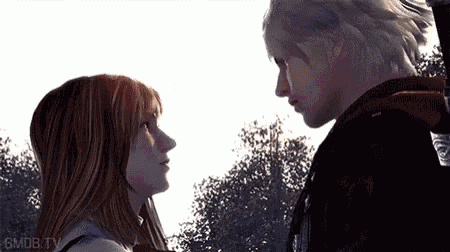

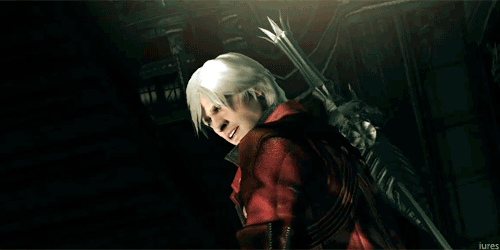
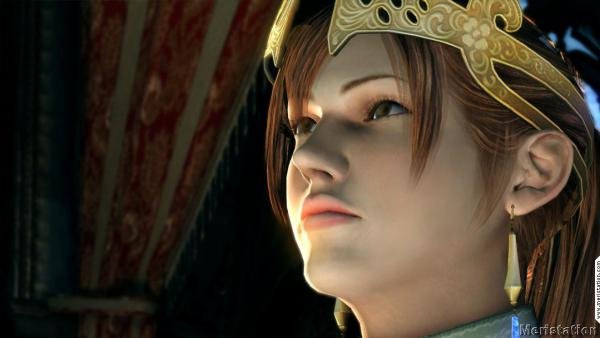
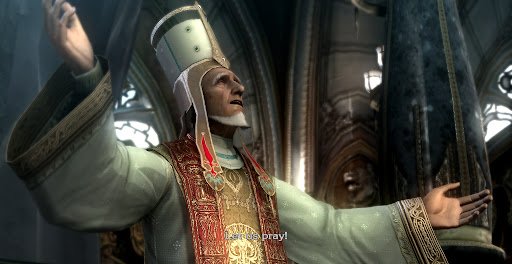


Justamente un amigo lo estaba jugando, qué curioso, y bueno, hablando del juego ya, creo que está un poco infravalorado, cuando la gente habla de DmC siempre habla de algunos cuantos como el 1, el 3 o puede ser que el 5, pero el 4 tuvo un hate estúpido si nos ponemos a pensar, y no es ni merecido, porque el juego es muy bueno, o por lo menos esa fue la impresión que me quedó del gameplay de ese juego y de los jefes que tenía.
Ciertamente el juego no es perfecto, el backtracking de verdad le resta bastantes puntos, pero el hate desmedido tampoco tiene razón de ser. Es un muy buen juego, pero cargaba con un hype muy comprometedor - superar a la tercera entrega -
Nunca me he dedicado a jugar esta parte de DMC pero siempre me ha llamado la atención, críticamente no fue tan bien recibida pero me parece curioso que luego del reboot volvieran a sus raíces y retomaran lo que esta entrega dejó. Las decepciones por no manejar a Dante me recuerdan mucho a la polémica con MGS 2 y Raiden.